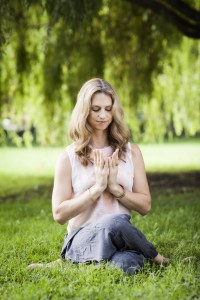by Monica Yearwood
Most people think of community as being limited to human relationships like friends and family. However, ayurveda, an ancient Indian lifestyle and medical system, expands the traditional concept of community by seeing people in a broader relationship with nature and the cosmos.
Ayurveda’s more expansive concept of community is found by realizing our individual purpose, adopting an ecologically focused dietary system, and obeying the calls and cues of nature.
Realizing our purpose
All of us have a unique purpose, or svadharma, to be realized in this lifetime. Through the awakening of our svadharma, we see beyond ourselves and our immediate family, friends and neighborhoods. Our community extends beyond the entire atlas of time and includes the world’s population, animal kingdom and planetary system. This maintains the universal order, or dharma, of the entire planet.
Several practices in ayurveda, such as daily meditation, nurture the svadharma. But even practices that seem unassociated can guide us to our purpose as well. A healthy diet, for example, inhibits illness so the physical body never becomes an impediment on the path to discovering svadharma.
Eating to heal
Ayurveda’s dietary system provides an ecologically founded framework that considers the well-being of the earth and all its inhabitants. The ayurvedic saying, “The earth provides the antidote,” illuminates that food is medicine and that nature provides the cure to what ails us.
Shop at a local farmer’s market to support your community’s farmers and economy, and choose seasonal foods to build your immune system. Locally grown organic food also yields higher antioxidant content, leaves a smaller carbon footprint and maintains the health of the land and soil.

Monica Yearwood, founder of Hamsa Ayurveda
Listening to nature
Those newly following the path of ayurveda often want to know their unique mind and body type, or dosha. They often believe their dosha defines them as an individual by prescribing dietary rules, herbal recommendations and daily activities. However, approaching ayurveda this way often misses out on the foundations that unify the community.
Ayurveda offers daily, monthly and seasonal lifestyle practices to incorporate all of nature’s constituents and members into our perception of community. Every day, practitioners align with each other as they rise with the sun, eat a large midday meal when the sun is strongest and eat a small dinner when the sun is weakest. Monthly, they become more externally directed during the full moon, interacting with their community. They align seasonally as they perform self massage in the fall and cleansing in the spring.
The lifestyle practices, collectively called sādhanas, provide the foundation for ayurveda. By arousing inner awareness, they intuitively empower people to make the best choices in all life experiences, including diet, relationships and vocation. Sharing the sādhanas brings practitioners together with each other, the planet and the universe.
Monica Yearwood is an Ayurvedic practitioner, author and founder of Hamsa Ayurveda Lifestyle Center in Chicago.






















No Responses to “Ayurveda: The Ayurvedic Atlas of Community”